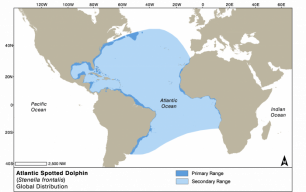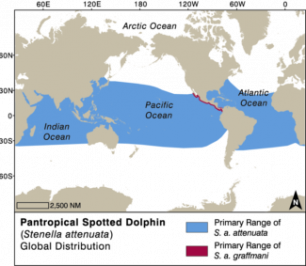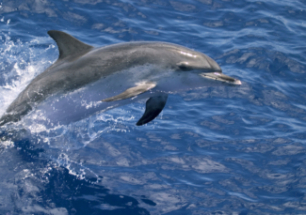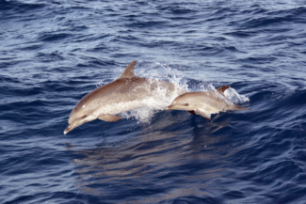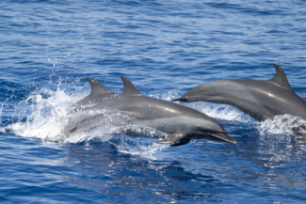Spotted dolphins include two tropical species with widely varying habitats, external appearance, and habits. However, it is likely that there will be further revision of their taxonomy as more becomes known. Currently, the Pantropical spotted dolphin (Stenella attenuata), is found in the Pacific, Atlantic and Indian Oceans, as well as the Persian Gulf and Red Sea; and the Atlantic Spotted dolphin (Stenella frontalis), is limited warm-water regions of the Atlantic. Pantropical spotted dolphins are further divided into two recognized subspecies, the offshore spotted dolphin (S.a. attenuata), which has a global distribution, and the Coastal spotted dolphin (S.a. graffmani)1, which is only found along the Pacific coast of Mexico and Central America. To further complicate matters, these dolphins are closely related to, and sometimes difficult to distinguish from many of the species with which they share their range and often form large mixed species groups. Pantropical spotted dolphins are best known for their longstanding association with the tuna fishing industry in the Eastern Tropical Pacific, which caused significant population declines in the past.
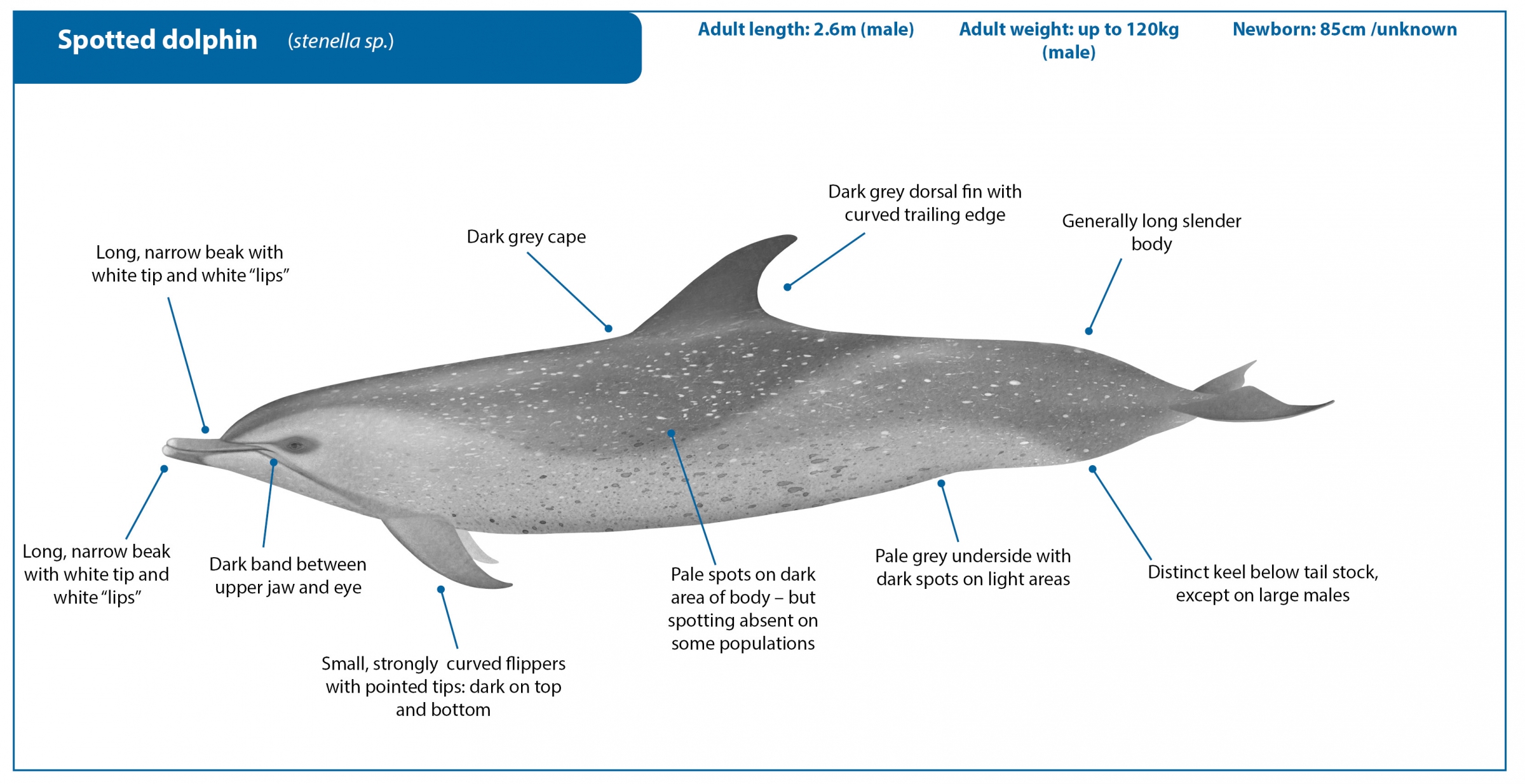
References
Show / Hide References
- Committee on Taxonomy. List of marine mammal species and subspecies. Society for Marine Mammalogy, www.marinemammalscience.org, consulted on 11 october 2017. (2017).
- Hammond, P. S. et al. in The IUCN Red List of Threatened Species. Version 2014.3 (http://www.iucnredlist.org/det... Consulted October 2017, 2012).
- Perrin, W. in Encyclopedia of Marine Mammals (eds W. Perrin, B. Wursig, & J.G.M. Thewissen) 819-821 (Elsevier, 2009).
- Jefferson, T. A., Webber, M. A. & Pitman, R. L. Marine Mammals of the World: a Comprehensive Guide to their Identification. Second Edition. (San Diego: Academic Press, 2015).
- Perrin, W. in Encyclopedia of Marine Mammals (eds W. Perrin, B. Wursig, & J.G.M. Thewissen) 55-56 (Elsevier, 2009).
- Hammond, P. S. et al. in The IUCN Red List of Threatened Species (http://www.iucnredlist.org/det... Consulted October 2017, 2012).
- Wang, M.-C., Walker, W. A., Shao, K.-T. & Chou, L.-S. Feeding habits of the pantropical spotted dolphin, Stenella attenuata, off the eastern coast of Taiwan. Zoological Studies 42, 368-378 (2003).
- Perrin, W. F. in Encyclopedia of Marine Mammals. Second Edition (eds W. F. Perrin, B. Würsig, & J.G.M. Thewissen) 1100-1103 (Academic Press, 2009).
- Querouil, S. et al. Why Do Dolphins Form Mixed-Species Associations in the Azores? Ethology 114, 1183–1194 (2008).
- Green, M. L., Herzing, D. L. & Baldwin, J. D. Noninvasive methodology for the sampling and extraction of DNA from free-ranging Atlantic spotted dolphins (Stenella frontalis). Molecular Ecology Notes 7, 1287-1292 (2007).
- Welshe, L. S. & Herzing, D. L. Preferential association among kin exhibited in a population of Atlantic Spotted Dolphins (Stenella frontalis). International Journal of Comparative Psychology 21, 1-11 (2008).
- Archer, F., Gerrodette, T., Chivers, S. & Jackson, A. Annual estimates of the unobserved incidental kill of pantropical spotted dolphin (Stenella attenuata attenuata) calves in the tuna purse-seine fishery of the eastern tropical Pacific. Fishery Bulletin 102, 233-244 (2004).
- Wade, P. Revised estimates of incidental kill of dolphins (Delphinidae) by the purse-seine tuna fishery in the eastern tropical Pacific, 1959-1972. Oceanographic Literature Review 1, 69 (1996).
- Gerrodette, T. & Forcada, J. Non-recovery of two spotted and spinner dolphin populations in the eastern tropical Pacific Ocean. Marine Ecology Progress Series 291, 1–21 (2005).
- Edwards, E. F. Fishery Effects on Dolphins Targeted by Tuna Purse-seiners in the Eastern Tropical Pacific Ocean. International Journal of Comparative Psychology 20, 217-227 (2007).
- Ritter, F. Boat-related behaviours of cetaceans as a tool for the development of species-specific whale watching guidelines. (MEER (Mammals Encounters Education Research) eV, Berlin, Germany, Poster presented at the Annual Conference of the ECS, Gran Canaria, Spain, March 2003, 2003).
- Herzing, D. L. Clicks, whistles and pulses: Passive and active signal use in dolphin communication. Acta Astronautica 105, 534-537.

